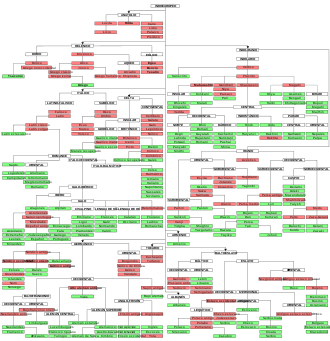Indoeurópa ñe'ẽnguéra
| Indoeurópa ñe'ẽnguéra | ||
|---|---|---|
| Yvy henda oĩva: | Opaite Yvy | |
| Tetãnguéra: | — | |
| Máva oñe'ẽva: | ~45% yvy avakuéra[1] | |
| Filiación genética: | — | |
| Subdivisiones: | Anatoliapegua Greko-Balkániko Italo-Celta-Germánico Balto-Eslavo Indo-iranio Tocario | |
| ISO 639-1 | — | |
| ISO 639-2 | ine | |
| ISO 639-3 | — | |
 -Verde oscuro: Lengua(s) IE(s) habladas mayoritariamente.
-Verde claro: Alguna lengua IE es oficial. -Azul claro: Lengua (s) IE(s) habladas por una minoría importante pero sin reconocimiento oficial. | ||
|
| ||

Indoeurópa ñe'ẽnguéra ha'ehína ñe'ẽnguéra aty tuichavéva yvóra pegua, máva oñe'ẽva hetakue rehe. Európa ñe'ẽnguéra ha Ásia mbytépe ñe'ẽnguéra oĩva ko atýpe, oguereko amo 150 ñe'ẽ, 3.200.000.000 avakuéra oñe'ẽva (45% ñande Yvy avakuéra).[1]
- Ñemby Vaykã ñe'ẽnguéra (frigio-armenio aty):[2] armeniañe'ẽ, frigio (†), peonio (†).
- Yvate Vaykã ñe'ẽnguéra (dáko-tracio, ha avañañe'ẽ aty): avañañe'ẽ, dacio (†), tracio (†).
- Báltiko ñe'ẽnguéra: prusiano antiguo (†), Letoñañe’ẽ, lituañañe'ẽ.
- Indoiranio ñe'ẽnguéra:
- Indoario ñe'ẽnguéra:
- Iranio ñe'ẽnguéra:
- Ymaguare: persa antiguo (†), avéstico (†), medo (†), escita (†).
- Mbytegua: sogdiáno (†), kotanés (†), bactriáno (†), párto (†), pahlavi (†), persa medio (†).
- Ko'ãgagua: beluche (baluchi), kúrdo, pastún, peysiañe'ẽ, tajikitãñe'ẽ, osétiañe'ẽ.
- Dárdiko ñe'ẽnguéra.
- Nuristaní ñe'ẽnguéra.
- Eslávo ñe'ẽnguéra
- Ñemby Elávia ñe'ẽnguéra: voniañe'ẽ, vugariañe'ẽ, kyoasiañe'ẽ, eloveñañe'ẽ, masendoñañe'ẽ, seviañe'ẽ, Eslávo Ymaguare Tupãogua (†).
- Kuarahyreike Elavia ñe'ẽnguéra
- Polaco-casubio: poloñañe'ẽ, polabo (†), silesiano, casubio
- Ambuéva: chéko, eslovaco, sorabo (sorbio, lusacio).
- Kuarahyresẽ Elávia ñe'ẽnguéra: rrusiañe'ẽ, vielorrusiañe'ẽ, ukyañañe'ẽ, ruteno (†), rrusinoñe'ẽ.
- Anatólia ñe'ẽnguéra (†): ititañe'ẽ (†), lidio ñe'ẽ (†), licio (†), luvita ñe'ẽ (†), pisidio (†), sidético (†).
- Sélta ñe'ẽnguéra
- Yvyrusugua Sélta ñe'ẽnguéra: galoñe'ẽ (†), celtíbero (†), lepóntico (†).
- Goidéliko ñe'ẽnguéra (gaélicas): manés (†), ilandañe'ẽ, gaélico escocés
- Vyretáña ñe'ẽnguéra: córnico (†), bretón, gáles ñe'ẽ.
- Heymáña ñe'ẽnguéra
- Kuarahyreike Heymáña ñe'ẽnguéra: Inglyes ymaguare, térã anglosajón (†), ingyaterrañe'ẽ, escocés (scots), lenguas frisonas, alemañañe'ẽ, luxemburgoñe'ẽ, Yiddish, alemañañe'ẽ ñembýre, holandañe'ẽ, afrikaans.
- Kuarahyresẽ Heymáña ñe'ẽnguéra: gótico (†), gótico de Crimea (†).
- Yvate Heymáña ñe'ẽnguéra: Escandinavo antiguo (†), islandés, feroés, noruegañe'ẽ, norn (†), noruego (bokmaal, riskmal), danés, sueco, dalecarniano, gútnico antiguo (†).
- Eléniko ñe'ẽnguéra: Gyresiañe'ẽ ymaguare, Gyresiañe'ẽ ko'ãgagua.
- Rrománse ñe'ẽnguéra:
- Lenguas osco-umbras (†): osco (†), umbro (†).
- Lenguas latino-faliscas antiguas: falisco (†), latinañe'ẽ (†).
- Rrománse ñe'ẽnguéra:
- Ivéria rrománse ñe'ẽnguéra: karaiñe'ẽ, galisiañe'ẽ-poytugañe'ẽ, aturialeõñe'ẽ, aragoñañe'ẽ.
- Okisitano rrománse ñe'ẽnguéra katalã ñe'ẽ, occitáno ñe'ẽ-gascón, ribagorzano.
- Galo rrománse ñe'ẽnguéra: hyãsiañe'ẽ, franco-provenzal.
- Rretorromániko ñe'ẽnguéra: romãche, friulano, ladino.
- Galo Italiagua ñe'ẽnguéra: ligur, piamontés, lombardo, emiliano-romañol, véneto.
- Italorrománse ñe'ẽnguéra: italiañe'ẽ, romanesco, nápoleñe'ẽ, sisíliañe'ẽ, corso-gallurés.
- Vaykã-Rrumáña ñe'ẽnguéra: rrumáñañe'ẽ, meglenorrumano, istrorrumano.
- Rrománse ypa'ũkuéragua ñe'ẽnguéra: sárdo, ymaguare kórso.
- Rrománse ñe'ẽnguéra ambuéva noñe'ẽvéiva: dálmata, mozárabe.
- Tocario ñe'ẽnguéra (†): tocario A (†), tocario B (†).
- Lusitáña ñe'ẽ (†).
Mandu'apy
[jehaijey | emoambue kuatia reñoiha]- ↑ 1,0 1,1 David Crystal, The Cambridge Enclyclopedia of Language, p. 283. ISBN 0-521-42443-7
- ↑ «Lenguas balcánicas». Archivado desde el original, el 2007-11-30. Ojehechákuri árape: 2007-11-30.
Arandukapurupyre
[jehaijey | emoambue kuatia reñoiha]- Bernard Comrie, ed (1987). The Major Languages of South Asia, the Middle East and Africa. Londres: Routledge. ISBN 0-415-05772-8.
- Clackson, James. (2007). Indo-European linguistics: An Introduction. Londres: Cambridge University Press. ISBN 978-0-521-65367-1.
Joaju
[jehaijey | emoambue kuatia reñoiha] Wikimedia Commons oguereko ta'ãnga Indoeurópa ñe'ẽnguéra reheguaCommons.
Wikimedia Commons oguereko ta'ãnga Indoeurópa ñe'ẽnguéra reheguaCommons.- LinguistList.org (clasificación completa de las lenguas indoeuropeas).
- Listas de Swadesh en lenguas indoeuropeas
- Indo-European Etymological Dictionary
- The Evolution of the Indo-European Languages
Text is available under the CC BY-SA 4.0 license; additional terms may apply.
Images, videos and audio are available under their respective licenses.
